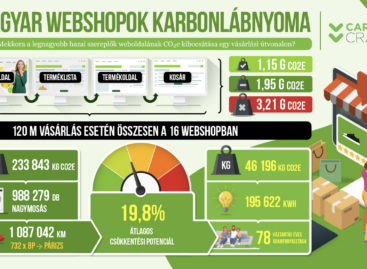Consumer solvency improves, a W-shaped recovery might follow
Households continued to strengthen their financial situation at the beginning of the 3rd quarter, but by the end of the 3-month period the Intrum Solvency Index (IFI) dropped again: its average value was 38.1, which was much lower than the 52 had been in the 3rd quarter of 2019 – yet way above the 18.9 points in April.
A drop after July
From July the solvency of the population was decreasing again and it was at 35.8 points by September. Data by Intrum back the forecast of the Ministry of Finance, which said the GDP would grow in the 3rd quarter and expected a W-shaped recovery path afterwards. In the 1st quarter of 2020 the Hungarian economy grew by 2.2 percent, but in the 2nd quarter the pandemic entailed a 13.6-percent recession. Experts calculate with a bounce back for the next period.
The second wave was a smaller shock to the economy
Károly Deszpot, director of sales and business development at Intrum stressed that there was a major drop in the solvency of consumers in the spring, during the first wave of the pandemic, but no such trend is visible in the second wave in the autumn. Mr Deszpot thinks the decline at the end of the 3rd quarter is primarily the result of the growing unemployment level. According to data from the Central Bank of Hungary (MNB), it is mainly the repaying of personal loans that consumers have stopped with, which indicates that the crisis affects those layers of the society more which have a lower income. //
Related news
MNB: artificial intelligence could be the new engine of the financial system
🎧 Hallgasd a cikket: Lejátszás Szünet Folytatás Leállítás Nyelv: Auto…
Read more >Perceived price increase index remains high
🎧 Hallgasd a cikket: Lejátszás Szünet Folytatás Leállítás Nyelv: Auto…
Read more >Industrial production is still declining in Hungary, but it is growing in the EU
🎧 Hallgasd a cikket: Lejátszás Szünet Folytatás Leállítás Nyelv: Auto…
Read more >Related news
Investment dumping is coming in the food industry
🎧 Hallgasd a cikket: Lejátszás Szünet Folytatás Leállítás Nyelv: Auto…
Read more >It turns out which online food ordering platform websites are the most sustainable
🎧 Hallgasd a cikket: Lejátszás Szünet Folytatás Leállítás Nyelv: Auto…
Read more >Customers are also looking for the record-breaking iPhones in refurbished versions
🎧 Hallgasd a cikket: Lejátszás Szünet Folytatás Leállítás Nyelv: Auto…
Read more >







